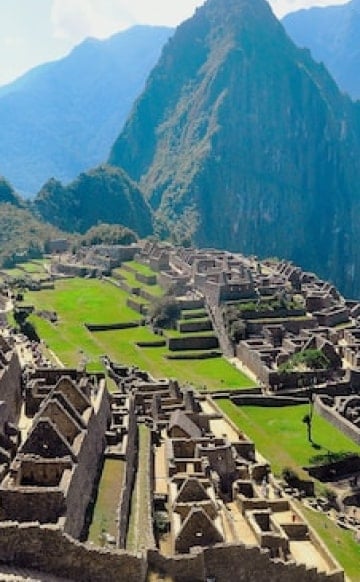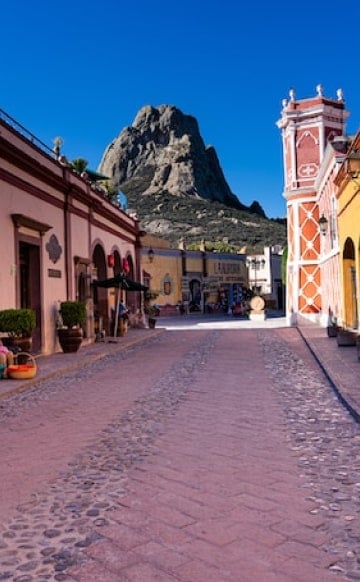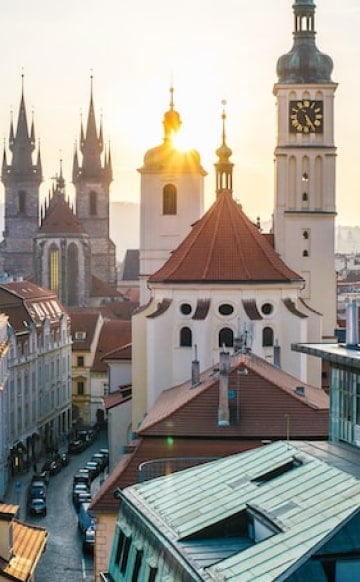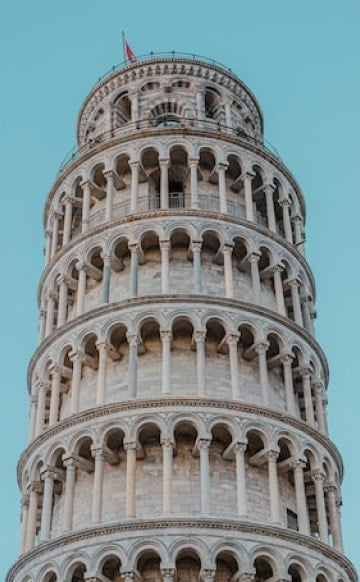If you’ve always wanted to travel back in time to another period in history, you don’t have to wait for a time machine. These fabulous vacation destinations offer a great glimpse of days gone by from ancient Egypt to the Wild West, the Victorian era and everything in between.

Jerusalem, Israel
This beloved city was first inhabited in 2800 BC. Long considered the center of the world, ancient maps show it in the middle of the three continents known at the time: Europe, Asia and Africa. The narrow streets in the Old City lead visitors past ancient buildings and towering stone walls that have survived centuries of destruction and resurrection. See the place Jesus was crucified, where Muhammad rose to heaven and where Jews built the temple. The Western Wall, the Church of the Holy Sepulchre and the Temple Mount with the Dome of the Rock all represent the three major religions. Strolling the souks in the cobble-stoned alleys will make you feel as if you’re a part of history, while a visit to the excavations at Jerusalem Archaeological Park, with remains that span 5,000 years, allows you to comprehend the incredible grandeur of this historical city.

Mackinac Island, Michigan
Mackinac Island is a year-round Michigan destination where you can take a Victorian escape to an era without cars, traveling by horse and buggy across the 2,400-acre isle that’s home to a population of just 500. Hop aboard a carriage tour to enjoy spectacular views and quaint Victorian architecture while hearing about the island’s history. At Fort Mackinac, you’ll find one of the only completely original Revolutionary War forts, while historic Mackinac Park is home to five buildings from the original downtown. Just a few of the other activity options on the island include garden tours, The Richard and Jane Manoogian Mackinac Art Museum, biking, horseback riding, golf, tennis, swimming and spa treatments. After a day of fun, relax at the 1887 Grand Hotel boasting the longest front porch in the world at an impressive 660 feet long.

Shikokumura - Takamatsu, Kagawa Prefecture, Japan
Shikokumura, located on the often forgotten island of Shikoku, offers the chance to step into the rural past of Japan as an open-air museum of 33 traditional houses from the Edo to the Taishō periods. It features a number of storehouses and farmhouses as well as a variety of traditional workshops that produced goods such as sugar and soya sauce. Other structures on exhibit include a lighthouse, bridges and a kabuki theater dating back 250 years which occasionally hosts performances. One of its highlights is a vine suspension bridge, similar to the ones found in the Iya Valley, made from vine and wood, and reinforced by steel cables. It also hosts a small art gallery exhibiting paintings and sculptures by artists from around the world.

Cappadocia, Turkey
If you want to go way, way back in time, you can even live like a caveman, or woman, in Cappadocia, Turkey. This region of Turkey is famed for its mushroom and anthill shaped towers known as fairy chimneys as well as its cave cities that were once home to ancient settlers. Experience what it might have been like to live during those times by staying at one of the many cave hotels, including The Museum Hotel, created by antique expert Omer Tosun, which offers 30 converted cave suites filled with artifacts and special finishes like stone fireplaces. Visitors can also explore the Goreme Open Air Museum, home to painted medieval cave churches and monasteries from the 10th, 11th and 12th centuries, take a stroll through ancient passageways at Kaymakli Underground City, or even soar above the entire breathtaking scene in a hot-air balloon.

Smicksburg, Pennsylvania
The Amish way of life hasn’t changed much at all over the last century. Step back in time into the Northern Indiana County town of Smicksburg, an Old Order Amish community that’s grown to more than 800 settlers. The Amish pursue a simpler way of life, with fields being farmed with horses and horse-drawn buggies the standard mode of transportation. Here you can browse or buy at some 20 specialty shops that offer crafts, quilts, furniture, foods and other homemade goodies. Drive by the authentic Amish Farms and even partake in an Amish Wedding Feast too.

Tombstone, Arizona
Once a wild-west frontier town known as the town “too tough to die,” Tombstone is a great place to relive the days of the Old West as the spot where the legendary gunfight at the O.K. Corral took place in 1881 – a 30-second gunfight pitting the Earp brothers and Doc Holliday against Billy Clanton and the McLaury brothers. If you don’t recall who won, find out more by paying a visit yourself. You can almost hear the gunfire, the sounds of the saloons and the buckboards clip-clopping down the dirt streets. If you want to find out more about the real history of Tombstone instead of just the tourist version, make a reservation for Dr. Jay’s Walking Tour. And, for an even more exciting visit, try to be here during Wyatt Earp Days, Vigilante Days or Hellodorado Days take place to see the vigilantes and vigilettes recreate the Old West in the middle of Allen Street.

Hahoe Folk Village, South Korea
Folk villages in Korea are a popular way of maintaining strong links with the country’s pastoral traditions. Hanoe Folk Village, located in Andong, the self-proclaimed “Capital City of Korean Spiritual Culture” having maintained aspects of the traditional culture of Korea throughout the past 2,000 years, is not just a show-town. It’s a fully-functioning 16th-century style community with preserved original buildings, including tiled-roofs for the aristocracy, thatched and mud-walled structures for the servant class – all picturesquely arranged in the shape of a lotus flower. Take a stroll down the dirt road, walking past small garden plots of squash vines, corn and green chili peppers, all overshadowed by riverbank escarpments. Down the road, practically endless farm fields stretch out to the horizon. To the left is a magnificent village of centuries-old homes. While many of the other Korean folk villages are focused on tourism, Hahoe is home to 230 residents that maintain the old ways, while the government helps out with preservation and restoration.

Den Gamble By - Aarhus, Denmark
Founded in 1909, “The Old Town” was the first open-air museum of its kind, focusing on the history and culture of past urban societies. It features 75 replicas of historical houses from across Denmark, providing the opportunity to wander through a 19th-century market town, explore a stately 18th-century home and even have a look at a gynecologist’s clinic from the 1970s. You can also meet the people and particular characters from the past, experiencing life as it was in their kitchens and living rooms. Explore the extensive collections and exhibitions at the museum, talk to the horses and the geese, and enjoy some coffee and cake in the tea garden or a pint in the Beer Cellar.

Skansen Open-Air Museum - Stockholm, Sweden
In the capital city of Stockholm, Gamla Stan is one of the largest and best-preserved medieval city centers in Europe, and it’s also home to Royal National City Park, the first urban national park in the world. Visitors can also head back to Sweden in the 19th-century by visiting Skansen Open-Air Museum, the world’s oldest open-air museum. Explore beautiful historic buildings in the Countryside and Town Quarter sections, from the charming cottages and farmsteads to an ornate mansion and a northern Sami camp. Venues illustrate the different social conditions in which people lived between the 16th and the early part of the 20th centuries. This Sweden in miniature features some 150 farms and dwellings from various parts of the country that were all disassembled and transported here. Swedish traditions like Lucia, Walpurgis Night and Midsummer, where visitors help make garlands of flowers for the maypole, are all celebrated at Skansen as well.

Williamsburg, Virginia
By visiting Williamsburg, Virginia, you can experience what it was like to be an original settler with the chance to stay at one of 26 Colonial Houses. Homes, from a tavern room to a two-bedroom, are scattered throughout the historic area. Take a walking tour, and you can visit the saddle maker, the blacksmith, a wigmaker and the apothecary. Along the way, you’ll likely encounter any number of historical characters, including one of the Founding Fathers, or First Lady Martha Washington. Watch history come alive with all sorts of costumed characters acting out the details of life in the early years of America. After all of that time travel, if you’ve worked up an appetite, enjoy dinner at the 18th-century tavern serving up Eastern shore clam stew and grilled tenderloin.

Egypt
One of the most culturally rich nations, and one of the most ancient destinations on the planet, stepping back in time to the lands of Ancient Egypt is an especially unforgettable experience. The Great Pyramid of Giza, which stands just outside Cairo, is one of the ancient Seven Wonders of the World. This magnificent pyramid, believed to have been built as a tomb for an Egyptian King known as “Khufu,” the fourth dynasty of kings for the Egyptian people, is thought to have been completed around 2540 BC, and for roughly 4,000 years the pyramid was considered to be the tallest structure made by man. Other sights in the area include the Sphinx at Giza, the Valley of the Kings, Luxur, the Egyptian Museum and Karnak.

Petra, Jordan
The ancient capital of Petra was built in the first century BC. The lost city was a site where many ancient trade routes converged, making its residents quite wealthy. It’s made up of hundreds of tombs, houses, a theater that could fit more than 3000 people, temples, obelisks and altars where animals were sacrificed to calm angry gods or ask for favors. The highlights are the theater and monastery, though the most recognizable is the Al Khazneh, more often referred to as The Treasury. Its use was a mystery until a recent excavation discovered it was likely a tomb for the royal family. Today, just 15% of the city has yet been uncovered, the other 85% remaining untouched underground.

Athens, Greece
Athens was first inhabited at least 5,000 years ago. When most people think of ancient Athens, they picture the Parthenon, an elegantly crafted symbol that represents the roots of democracy, but experts say the Acropolis site that sits on a rocky bluff was actually inhabited thousands of years before it existed – and even thousands of years Aristotle, Socrates and Plato walked Athens’ streets. The city was the first to host the modern Olympic Games, the birthplace of Western civilization and the ancient home of philosophy. Visit the Acropolis Museum to watch curators restore marble statues with laser technology, stroll the winding streets in historic Plaka to discover ancient monuments, neoclassical mansions and more.

Plovdiv, Bulgaria
Plovdiv, in south-central Bulgaria located near the border of Turkey and Greece, is known as the “City of Seven Hills,” and was first inhabited in 3000 to 4000 BC. One of the most ancient cities in the world and Europe’s oldest inhabited city, even older than Athens, the settlement was originally Thracian, but it became a major Greek and then a Roman city known as Philippopolis, named after the King of Philip II of Macedon, Alexander the Great’s father, who conquered the city in 342BC. Today, you can see the influences those cultures left behind in fortress walls, cobblestone streets, Ottoman baths, a Roman amphitheater and aqueduct. The Theater overlooks the city, with views all the way over to the Rhodope Mountains that span the southern fringe of Bulgaria and all the way into Greece.
Be sure to take a walk through the archaeological complex at Nebet and the museums and galleries in Old Town. Seeing a performance at the restored 1st century open-air Ancient Theater is also a must – it was originally used for gladiator games and theatrical performances.

Tatariv, Ukraine
The majority of visitors to Tatariv, located in the breathtaking Carpathian Mountains, come for its natural wonders, with beech and conifer forests that fill the air with a soothing scent as well as pristine rivers and lakes that teem with trout. Wild berries, including raspberries, strawberries, cowberries and blackberries are readily available for picking, while a variety of herbs and mushrooms can also be found. But the area is also rich in culture and history. It’s not uncommon to see horse-drawn carts in rural Ukraine or to find farmers using horse-drawn plows and hand-scythes in the fields. Tatariv is one of the living relics of old-Ukraine, where carts used for transport in summer are replaced by sleighs in chilly winters.

Luoyang, China
Luoyang is Asia’s oldest continuously inhabited city, dating from around 2070 BC and considered to be the cradle of Chinese civilization, as the capital city of 13 ancient dynasties from the Xia Dynasty. It sits on the sunny side of the Luo River where it converges with the Yi River and is encircled by beautiful mountains, with Chinese Buddhist temples and monuments carved into the sides of hills. Climb the hillside steps to see some 100,000 statues and 2,800 calligraphic inscriptions at the Longmen Grottoes and visit White Horse Temple, the first Buddhist temple in the nation.

Varanasi, India
India’s oldest city, inhabited since 1200 to 1100 BC, is known as the land of temples and the city of Lord Shiva. It’s also one of the world’s holiest cities. Shiva is believed to have lived in the area and a major shrine here honors this lord of the universe. There are hundreds of temples here, all of which come laden with history and religious significance – many are as old as 500-1000 years. Pilgrims travel from far and wide to visit the shrine and bathe in the Varanasi’s sacred Ganges River. Every day, thousands immerse themselves, or even come to die in these waters that are said to have absolved the sins of many generations.
Be sure to visit the city’s various temples and ghats. The Kashi Vishwanath and Sankat Mochan temples are the most popular, but don’t let that stop you from finding your own favorite. Although Vishwanath is closed to non-Hindus, you view its beautiful golden spire.

Camlann Medieval Village, Washington
If you don’t want to travel overseas to experience medieval times, you might want to visit Camlann Medieval Village, located less than an hour east of the city of Seattle. This living history museum project portrays rural England in 1376. You’ll feel as if you really are back in 14th-century England, just by taking a stroll through the village with its costumed guides that speak as if it’s actually 1376. You can even take classes to learn about the Middle English language, how to cook on an open hearth and make medieval shoes.
Summer village festivals include theatre, knightly combat, crafts, archery puppetry and minstrels. Concert performances feature skilled professional entertainers that present music and stories from medieval sources using instruments that were played before the 15th-century, including the harp, lute, recorder, pipe & tabor, symphony and more. Be sure to join in with the village dancers for an especially unforgettable experience.




































